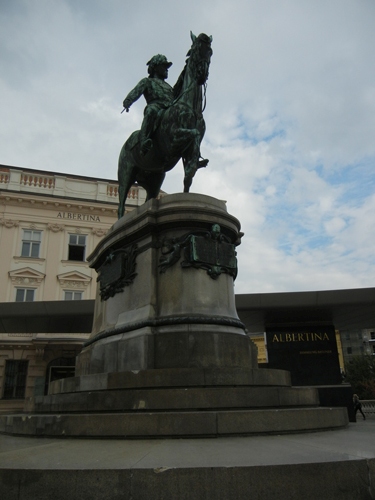
Ten years later, I finally was able to visit this wonderful museum, located in Palais Erzherzog Albrecht (Archduke Albrecht). The palace itself was as sumptuous as it could be, with richly yet tastefully decorated functional halls and rooms.

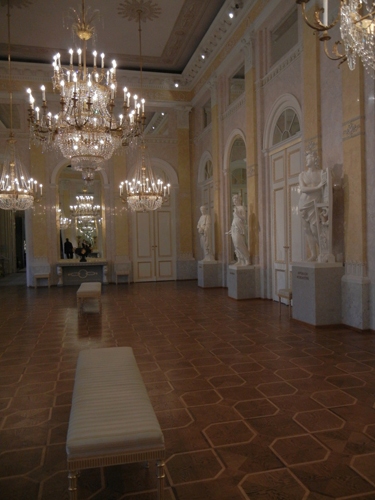
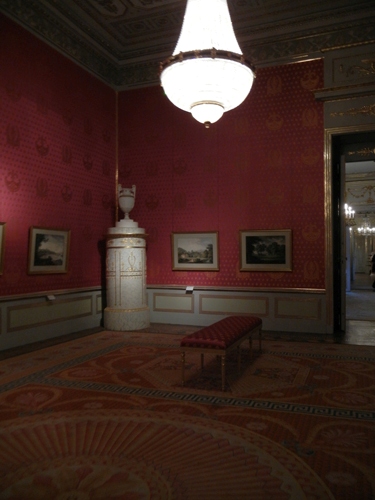
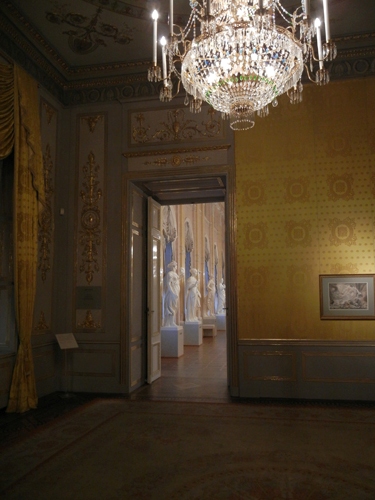
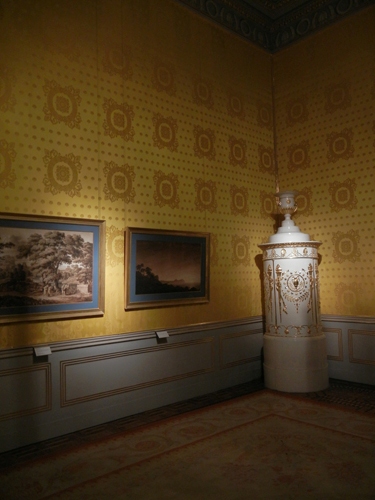
There were many facsimiles of the famous Dürer drawings and paintings by old and modern masters. Naturally, I was somewhat disappointed that those Dürer's drawings were not genuine but I also understood the fragility of them and accepted the inevitability. Nevertheless, seeing them, though copies, in this palatial setting was a visual treat.

Young Hare by Albrecht Dürer (1502), public domain, source: Wikipedia
More gratifying, was a special exhibit, Kaiser Maximilian I. und die Kunst der Dürer-Zeit (Emperor Maximilian I and the Age of Dürer) (14. September 2012 - 6. January 2013), which highlighted some of the museum's greatest collections, plus some works from other museums.
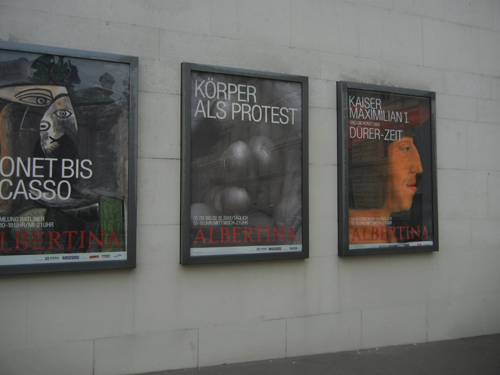
Kaiser Maximilian I. was not the first Hapsburg Holy Roman Emperor but through his and his children's marriages, the Hapsburg's domain increased dramatically and the Habsburg dynasty became perennial dominant force in central Europe. Below painting of the Maximilian I. and his family was part of the exhibit.

Die Familie des Kaisers Maximilian I., Bernhard Strigel, 1515-1520, Malerei auf Lindenholz, Kunsthistorisches Museum, Wien
The Family of Maximilian I, Bernhard Strigel, 1515-1520 Painting on limewood, Kunsthistorisches Museum, Vienna
The highlights of this special exhibit were two incredible cycles of Triumph Procession of Kaiser Maxilimian I. - a water color cycle by Albrecht Altdorfer and a woodcut cycle by Hans Burgkmair the Elder. Albertina Museum informed us that "the extraordinary Triumphal Procession of Albrecht Altdorfer and his workshop, which will form the core of the exhibit. Of the original 109 large-sized parchment sheets with flamboyantly colourful representations of riders, magnificent chariots and landsknechts, sheets 49 to 109 are preseved in the Albertina and, compiled as a frieze, amount to a length of more than 54 metres." It was absolutely unforgettable. Though Hans Burgkmair's cycle was somewhat shorter and only in black and white, it was no less extraordinary.

Die deutschen Fürsten aus dem Triumphzug Kaiser Maximilians I., Albrecht Altdorfer, um 1512-15, Feder in Braun, Aquarell und Deckfarben, Goldhöhungen, auf Pergament, Albertina, Wien
"The German Princes" from the "Triumphal Procession of Emperor Maximilian I", Albrecht Altdorfer, c. 1512-1515 Pen and brown ink, watercolour and bodycolour, heightened with gold, on vellum, Albertina, Vienna

Tross aus dem Triumphzug Kaiser Maximilians I., Albrecht Altdorfer und Werkstatt, um 1512-1515, Feder in Braun, Aquarell- und Deckfarbe, Goldhöhung auf Pergament, Albertina, Wien
"Baggage Train" from the "Triumphal Procession of Emperor Maximilian I", Albrecht Altdorfer and workshop, c. 1512-1515 Pen and brown ink, watercolour and bodycolour, heightened with gold, on vellum, Albertina, Vienna

Der Heilige Georg, Hans Burgkmair d. Ä., 1518 Holzschnitt, Albertina, Wien
Saint George, Hans Burgkmair the Elder, 1518 Woodcut, Albertina, Vienna

Der Verkünder des Triumphes aus dem Triumphzug Kaiser Maximilians I., Hans Burgkmair d. Ä., 1516-18 (3. Ausg. 1796) Holzschnitt, Albertina, Wien
The Triumphal Procession of Emperor Maximilian I, Hans Burgkmair the Elder, 1796, Woodcut Albertina, Vienna
Two works by Albrecht Dürer included in this exhibition were strikingly remarkable. His engraving "Knight, Death and the Devil" was an outstanding example of his extremely high achievement as a virtuosic draftsman and engraver, and his deep insight of humanity and his terrifying time.

Ritter, Tod und Teufel, Albrecht Dürer, 1513, Kupferstich, Albertina, Wien
Knight, Death and the Devil, Albrecht Dürer, 1513, Copper engraving, Albertina, Vienna
The other Dürer piece was a floor to ceiling collage of colored woodcut prints - "The Triumphal Arch of Emperor Maximilian I", 1517-18, collaborated by Albrecht Dürer, Hans Springinklee, Wolf Traut and Albrecht Altdorfer, with an approximate dimensions of 3.04 x 2.92 meters. Here, the sheer size and variety of the details were astonishing and made me giddy. As a piece of propaganda work, it indeed had reached to the sky.

Ehrenpforte des Kaisers Maximilian I., Albrecht Dürer, 1515 (3. Ausgabe 1559), Holzschnitt, koloriert, aufgezogen, gerollt, Albertina, Wien
The Triumphal Arch of Emperor Maximilian I, Albrecht Dürer, 3rd edition, 1559, Coloured woodcut, laid down, rolled up, Albertina, Vienna
One more memorable piece in this special exhibit was a painting from Graz - "Death Portrait of Emperor Maximilian I". It was a spooky one, yet beautiful and it drew viewers in. These striking black, white, red and green colors, generated an image and presence would not die with the passing of the sitter. According to the museum's notes, that Maximilian had ordered that his teeth pulled out and bones broken, etc., to demonstrate his humility. An extraordinary politician!

Totenbildnis Kaiser Maximilians I., Monogrammist A.A., 1519 Tempera auf Papier auf Holzrahmen, Steiermärkisches Landesmuseum Joanneum, Graz
Death Portrait of Emperor Maximilian I, Monogrammist A.A., 1519, Tempera on paper, mounted on a wooden frame, Styrian State Museum Joanneum, Graz
I own a facsimile of a complete book Theuerdank, an extraordinarily illustrated parchment manuscript on a knight and chivalry, which was included in this exhibition along with Maximilian's other book project, Weisskunig and Freydal. Below is a quote from an introduction by Stephan Füssel to the fascimile, "Emperor Maximilian and the Media of His Day - The Theuerdank of 1517":
Maxililianwas the first ruler of the modern age to consciously and purposefully employ the new possibilities of book printing - in addition to the "old" media of the spoken word, visual art, folk music, etc. - for maintaining his own power and for increasing the prestige of his dynasty, the House of Habsburg. In doing so, he was motivated by the concern that otherwise his fame would "die away with the last toll". As he phrased it so succinctly in his German prose work Weisskunig: "He who creates no memorial in his life will not be remembered after his death and such people will be forgotten when the bell tolls, and for this reason the money I spend on these memorials is not wasted." (Weisskunig ch. 24)
The ear of Maximilian was celebrated by contemporaries as the "beginning of a new age", a "golden age", in which the arts and sciences blossomed and the Empire, inwardly and outwardly stabilised, was at peace. Among other endeavours, Maximilian opened the University of Vienna to humanistic studies, promoted Latin poetry as well as national vernacular literature, and imitated the Renaissance culture of the Italian principalities. He was equally receptive to feudal courtly traditions as he was to technical, scientific and artistic innovations, book printing and the construction of artillery.
... he embodies not only the typical virtues of a ruler, but also artistic and poetic abilities, for example those of the painter. An old and wise man is said to have told him that he must not only be a just military leader, but also possess an understanding of the arts; as a result, Maximilian painted "diligently" from his earliest youth. He was also initiated into the secrets of the black arts, that is, magic, as well as those of architecture, carpentry, the preparation of food, music and stringed instruments.
This variety of talents enabled Maximilian to give the various artists he employed - whether painters, composers or writers - instructions about how they should represent his reign, in the language of the humanists, Latin, as well as the language of the people.
Albertina Museum was also a living one and it kept collecting modern works. The most recognizable names included Chagall, Picasso and Munch, etc. Below are a sample of the paintings I enjoyed while visiting it last month:
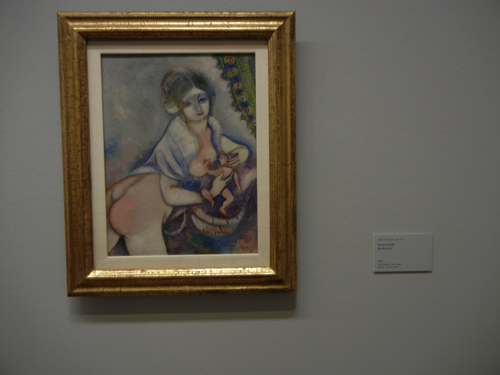
Mutterschaft (Motherhood), Marc Chagall, 1914, Öl auf Papier (Oil on Paper)
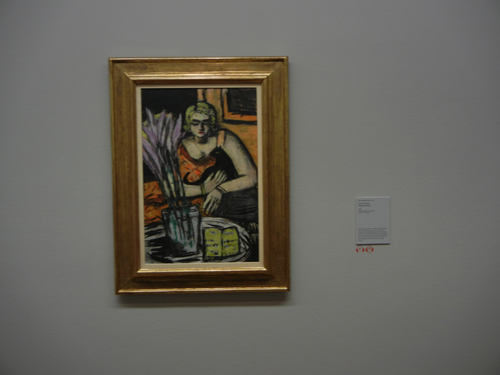
Frau mit Katze (Woman and Cat), Max Beckmann, 1942, Öl auf Leinwand (Oil on Canvas)

Bidnis M. B. (Portrait of M. B.), Herbert Boeckl (1894-1966), 1919, Öl auf Leinwand (Oil on Canvas)
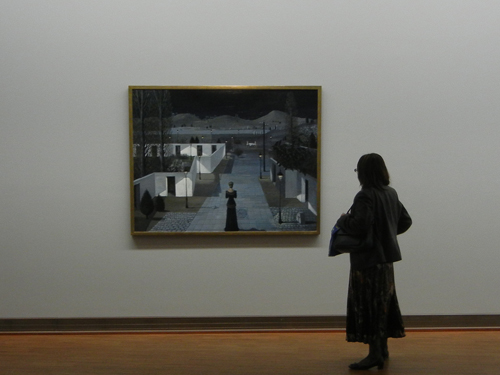
Landschaft mit Lanternen (Landscape with Lanterns), 1958, Paul Delvaux (1897-1994)
Label: Austria, Austria and Italy Trip 2012





No comments:
Post a Comment